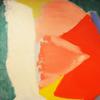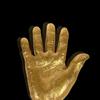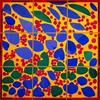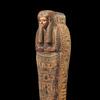Beneath a Wild Sky - Stories of America's Lost Birds In Exhibit Featuring Audubon Prints
- SANTA BARBARA, California
- /
- April 21, 2021
John James Audubon, whose name now is synonymous with wildlife conservation, wrote that in 1813 he observed Passenger Pigeons as they flew overhead in such massive flocks that they blocked out the sun as if there was an eclipse. He wrote prophetically about rapid changes he saw even in his lifetime.
Antique prints and the prophetic words of 18th and 19th century naturalists tell the stories of vanished birds in a current exhibit from Santa Barbara Museum of Natural History’s John and Peggy Maximus Gallery. Artwork and quotes from John James Audubon, Alexander Wilson, and Mark Catesby reveal the tragic histories of the Passenger Pigeon, the Great Auk, and other species lost or driven to the brink of extinction.
The exhibit originally opened in February 2020, was shuttered during the COVID-19 pandemic and has since reopened until May 2. The theme centers on the diversity and abundance of wildlife in North America in the early 19th century as witnessed by artists and ornithologists, paired with their own prophetic warnings about wilderness loss during their time.
Maximus Gallery Curator Linda Miller first conceived an exhibition of America’s lost birds portrayed by early artists and naturalists after reading the haunting conservation narrative Hope is the Thing with Feathers by Christopher Cokinos. “The challenge was finding the art to flesh out the story,” says Miller. “Some of these prints are over 250 years old, and they’re not easily found.” When a rare opportunity arose in 2019 to acquire a scarce 1836 Audubon print featuring Passenger Pigeons, Miller jumped at the chance to assemble a complete exhibition.
Beneath a Wild Sky features eight vignettes of lost species as seen from the perspective of Catesby, Wilson, and Audubon. “They witnessed these birds when they were abundant in the American wilderness,” Miller explains. “Their stories form a cautionary tale,” illustrating how humans have unwittingly exterminated species through habitat destruction, hunting, and the introduction of predators.
Rebecca Fagan Coulter—who leads popular birdwatching courses for the Museum—reflects on the significance of the images in the exhibit: “There will never be an opportunity to see these birds animated, hear their voices, understand for ourselves how they fit into nature. All that’s left of these birds is what the artists tell us.”
Miller acknowledges the sadness of the subject: “I’ll have a box of Kleenex in the gallery.” Yet she hopes the ongoing story of the California Condor—also featured in the exhibit—will leave visitors with a sense of purpose. “It shows that when government policy and interested people get together and try to save a species, it makes it possible that this one will make it, though it will require long-term management.” A recently restored 1838 Audubon engraving of a California Condor is prominently displayed in the gallery for the first time during Beneath a Wild Sky, its large format suitable for a bird of imposing presence.
Museum President and CEO Luke Swetland commented: “Beneath a Wild Sky pointedly reminds us of those birds we have already lost, but it also shows where our courageous actions have brought back other species from the brink of extinction. This museum plays a vitally important role in being a trusted scientific institution that invites visitors to consider our impacts on the natural world we share with all living things.” To that end, data-driven advice from Cornell Lab of Ornithology is posted near the gallery entrance, sharing simple ways to help birds today, including making windows safer, keeping cats indoors, gardening with native plants, and reducing the use of pesticides and plastic.
For more information on the Maximus Gallery, visit sbnature.org/maximus. Read more on the exhibit in the museum's blog.


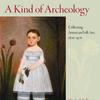


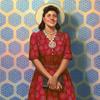

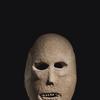
_Infinity_by_Santiago_Medina_PhotoCr100x100_c.jpg)

